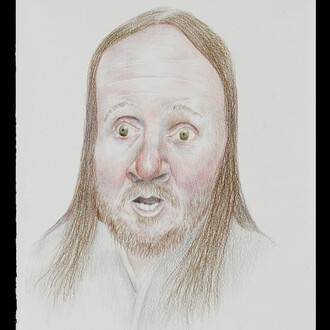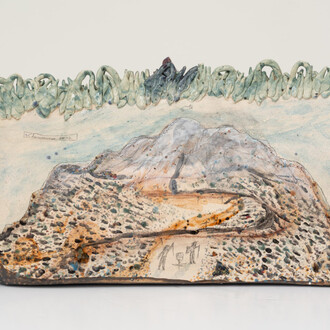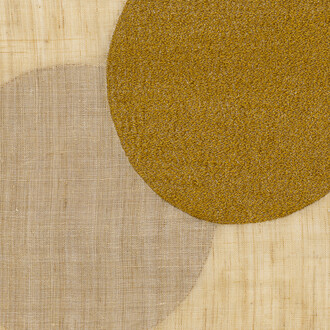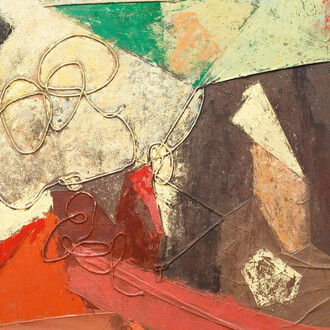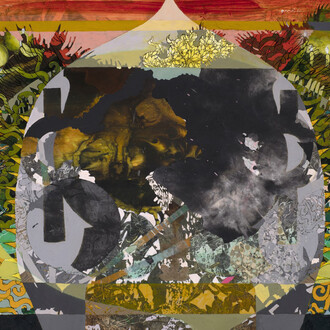Team (gallery, inc.) is pleased to present a one-person exhibition of photographs by New York-based photographer Lili Jamail. Entitled “Rollercoaster,” the show will run from 05 September through 05 October 2019. This is the seventh entry in our project room series “Gallery B.” Team is located at 83 Grand Street in New York, cross streets Wooster and Greene, on the ground floor.
Lili Jamail’s stoic photographs are marked by an understated tension between internal and external states and spaces. The images on view belong to two familiar categories of photography - portraits and landscapes - and are made with exceptional care and evident technical skill. The pictures share a laconic restraint and a reserved, tense austerity, conveying the calm before the storm or the stunned silence that follows. The show’s title, “Rollercoaster,” suggests extremes - leisure and stress, anticipation and release - and the proximity of hard won control with depths of raw emotion.
A palpable intimacy and affection between the photographer and her subjects is tempered by a carefully-held distance that leaves their connection uncertain. The portraits could be of close friends or perfect strangers, but in either case they are estranged in their perfection or perfect in their estrangement. Jamail’s articulation of individuality, context, and separation bears the influence of Katy Grannan, Justine Kurland and Alec Soth, and the merger of fictive strategies and extempore realities that characterize their practices. Like those photographers, the artist questions how to generate or implicate narrative, on either side - temporal and physical - of the shutter’s release. Lucy Soutter writes that photography is always and never a narrative form, “Caught in a state of permanent suspense vis-à-vis events that have just happened or are about to take place, photographs contain essential seeds of narratives that can never come to fruition except in the imagination.” Jamail actively seeks to train our eye on the moment before and the moment after, always striving to evoke the feeling of waiting.
Jamail’s images frequently depict a disjuncture between the physical presence of the subject and their internal state, with security, vulnerability, tenderness, and voyeurism collecting in the schism between documentary and staged orchestration. In apparently serene portraits, subtleties of expression, pose, and framing induce a mounting sense of unease and apprehension. A highly-exacting composure is balanced by a dissonant gap the viewer rushes to fill, drawing us to conclusions about the interior life of the subject that are perhaps most revealing of our own psychology.
In “Nicole Car,” a sleeping woman reclines on a pale leather seat, leaning away from the camera. A stillness pervades the interior of the car: a silken grey light washes over the clean surfaces and rain beads the window, obscuring what’s outside. The well-groomed, high-finish artifice of the image kindles a wariness as to whether the scene is candid or staged, leaving the viewer to contend with the contingency of fabrication and fact and the futility of determining authenticity. The nature of the scene shifts from reportage to voyeurism to neorealist orchestration, suggesting the gaps in between are where we might encounter the real narrative behind the image.
“Katina” is at first glance a serene portrait of a woman wrapped in a towel and reclining on crisp white bedlinens. An initial impression of relaxation and abundant thread-count comfort becomes increasingly impossible to square with a sensation of unease and stiffness: contemplative reflection sours into an emptied gaze of solipsistic disassociation; the spa-like atmosphere seems more and more like a sanatorium; vitality can only remind us of sickness.
The tightly framed portraits place the subjects within highly specific yet barely visible locations that provide no escape from the scene. The ambiguity of these backdrops relies on their vague rendering, but the evocative landscapes shown alongside them are distinctly captured yet no more legible and no less enigmatic. Jamail’s technical dexterity with lighting and composition become a means for contradictory ends, defamiliarizing setting and disorienting our sense of scale and gravity. Colliding the intimate and remote, matter-of-fact and mythic, the landscapes and portraits share the same close air.










